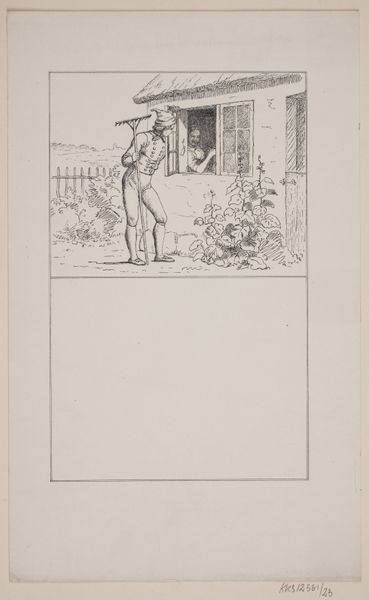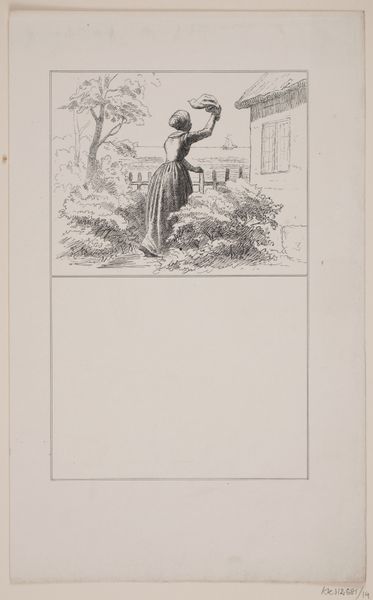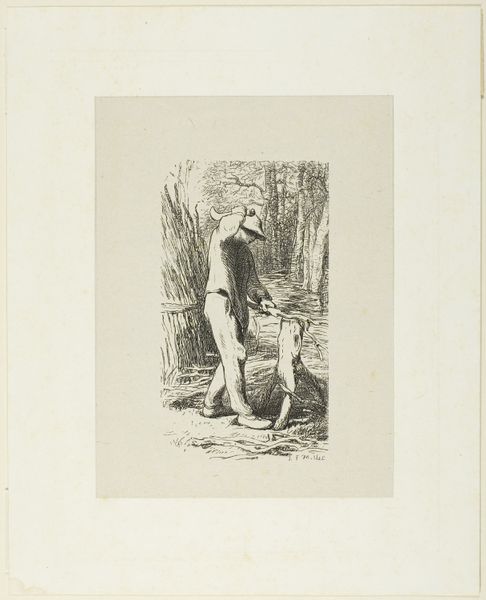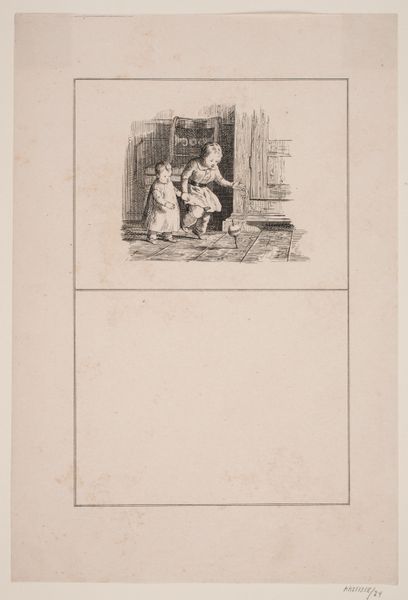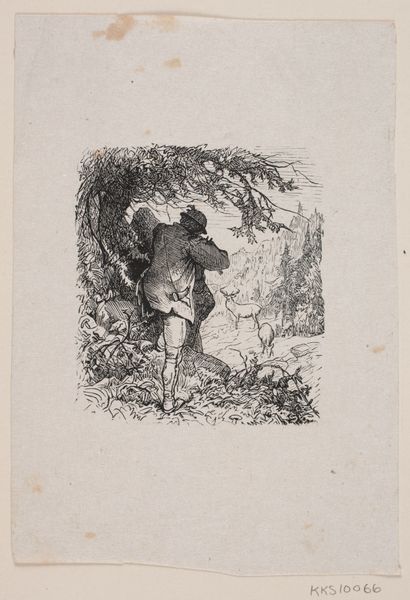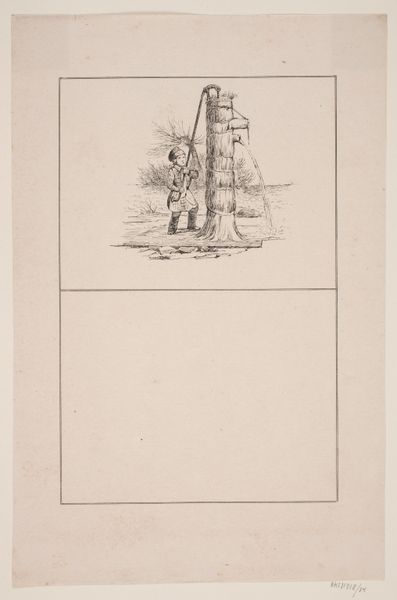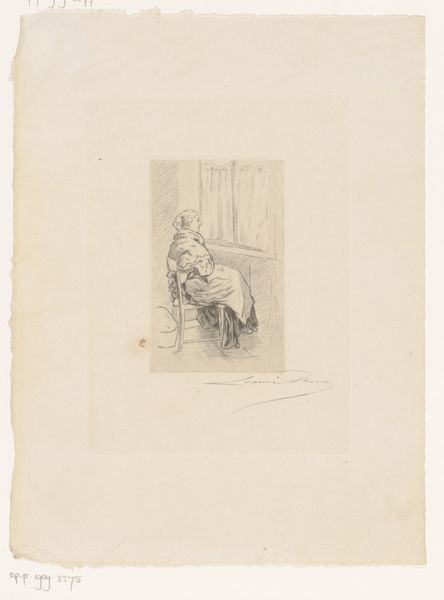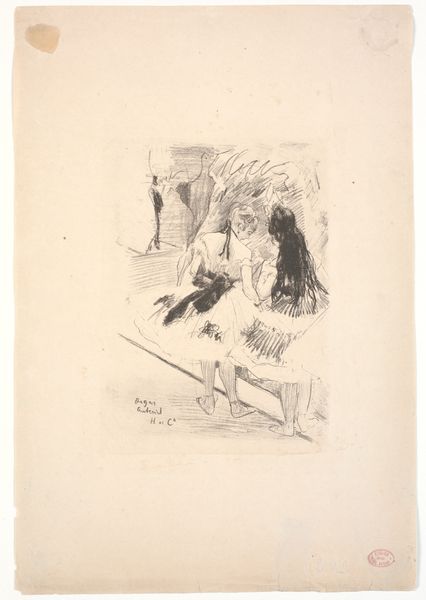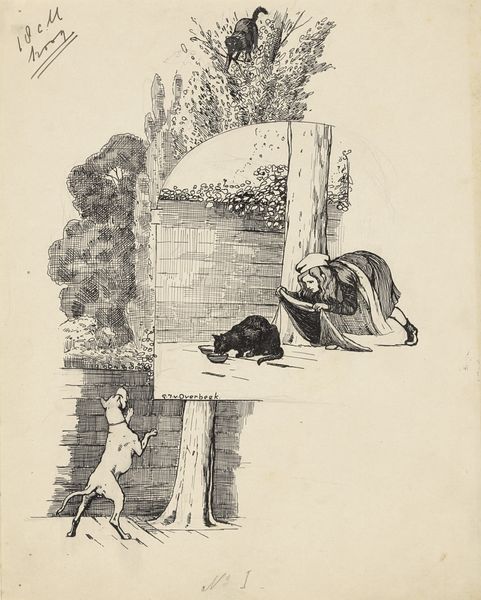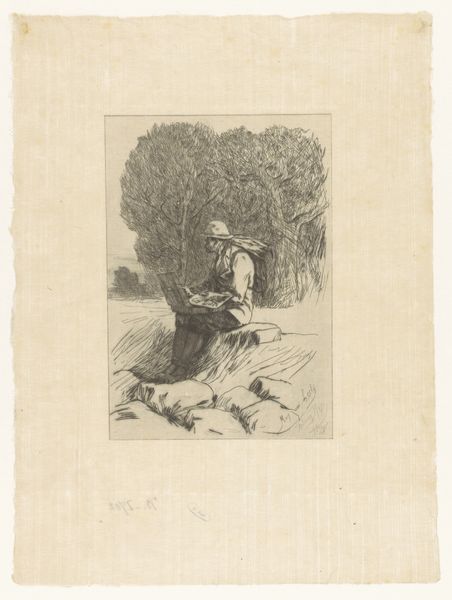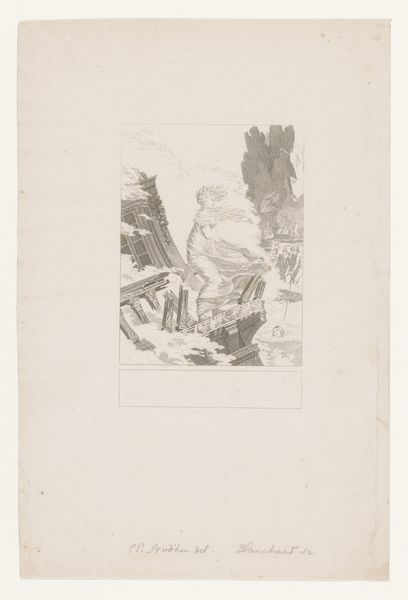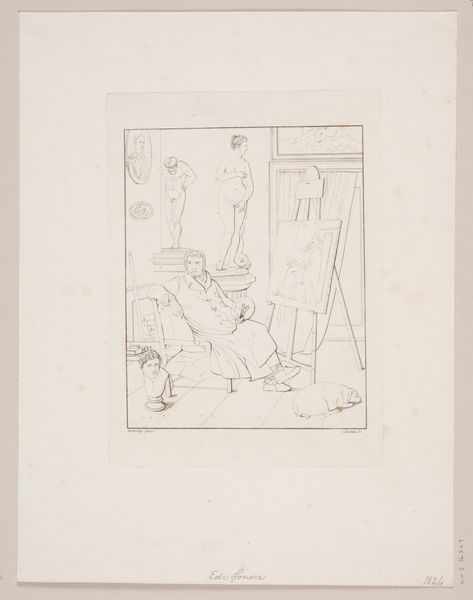
drawing, lithograph, print, etching, paper, ink
#
drawing
#
lithograph
# print
#
etching
#
landscape
#
etching
#
paper
#
ink
#
genre-painting
Dimensions: 259 mm (height) x 173 mm (width) (bladmaal)
Editor: So, this is "Møllehesten," created around 1845 by Adolph Kittendorff, using etching and ink on paper. It feels…nostalgic? The image of the horse looking out of what appears to be a dilapidated stable evokes a sense of longing and stillness. What resonates most with you when you look at it? Curator: The horse, of course, has always been a potent symbol—of strength, freedom, but also of labor. Consider how frequently the horse appears in creation myths; the link with water, a source of life in many traditions, is especially significant. Look at this depiction: it is not a majestic steed, but one peering out from a rather humble structure. What does that placement tell you about its symbolic purpose? Editor: That's a good question. Perhaps it speaks to a constrained power? The horse isn’t running free. Is that what you mean? Curator: Exactly. Think about the context. 1845. This is pre-industrial Denmark, deeply agrarian. Horses were essential, vital for work and transport, deeply connected to folk culture and rural identity. Notice how the landscape is sketched in such a simple, almost sparse manner; the details are minimal, yet they evoke a specific sense of place and time. The horse becomes almost allegorical. What human attributes do we assign it in this image? Editor: Maybe… resilience? Even in confinement, it still observes the world outside. The hope of something beyond. Curator: Precisely. Kittendorff uses the familiar imagery of rural life and infuses it with something deeper—a yearning for connection, an acknowledgement of the intertwined destinies of humanity and nature. Do you find your understanding shifting now, seeing these layers? Editor: Definitely. I was so focused on the nostalgic feeling that I initially missed the underlying symbolism. It’s about more than just a pretty picture of a horse. Curator: Art invites us to reflect. And it often surprises us.
Comments
No comments
Be the first to comment and join the conversation on the ultimate creative platform.
